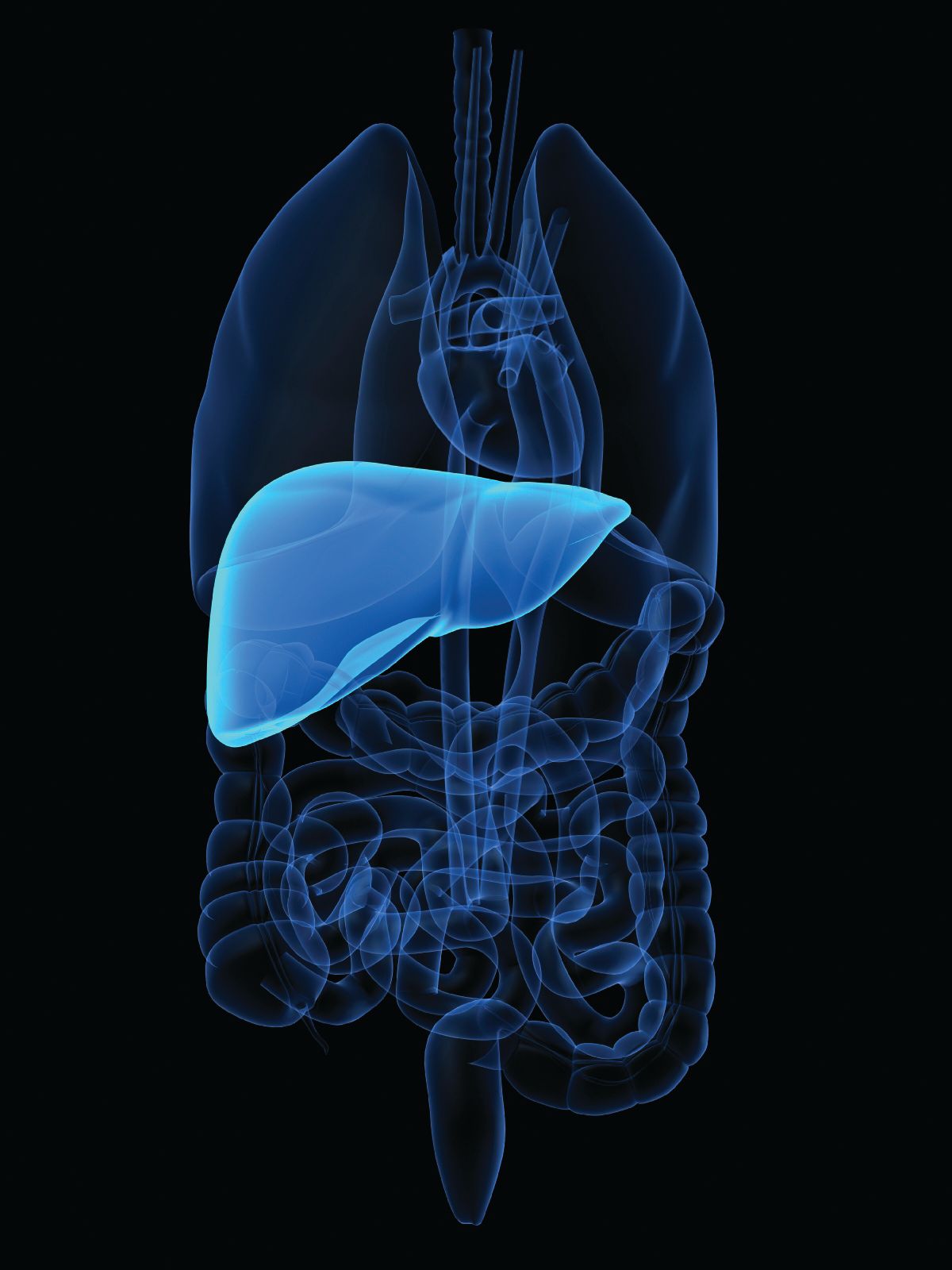Futibatinib Yields Clinical Benefit in FGFR2+ Intrahepatic Cholangiocarcinoma
According to findings from a phase 2 clinical study, futibatinib may achieve benefit in patients with intrahepatic cholangiocarcinoma harboring FGFR2 rearrangements.
The covalently binding FGFR1 to 4 inhibitor futibatinib (Lytgobi) achieved measurable clinical benefit in patients with unresectable or metastatic FGFR2 rearranged intrahepatic cholangiocarcinoma, according to findings from the phase 2 FOENIX-CCA2 study (NCT02052778).
Data establish "futibatinib as having measurable clinical benefit in patients with [intrahepatic cholangiocarcinoma] and show the value of molecular profiling in identifying tumors that are likely to respond to FGFR2 inhibition,” according to authors of the phase 2 FOENIX-CCA2 study.

The objective response rate (ORR) of patients treated with futibatinib was 42% (n = 43/103; 95% CI, 32%-52%) as assessed by independent central review, which included 1 patient with a complete response. Additionally, the disease control rate (DCR) was 83% (n = 85/103; 95% CI, 74%-89%), and the median duration of response (DOR) was 9.7 months (95% CI, 7.6-17.0)
The median progression-free survival (PFS) was 9.0 months (95% CI, 6.9-13.1), and the 6-month and 12-month PFS rates were 66% (95% CI, 56%-75%) and 40% (95% CI, 29%-51%), respectively. Additionally, the median overall survival (OS) was 21.7 months (95% CI, 14.5-not reached), and the 12-month OS rate was 72% (95% CI, 62%-80%).
“Clinical and translational research has shown that FGFR2 fusion or rearrangement–positive intrahepatic cholangiocarcinoma is a treatable cancer,” the study authors stated. “Data from this study establish futibatinib as having measurable clinical benefit in patients with this disease and show the value of molecular profiling in identifying tumors that are likely to respond to FGFR2 inhibition.”
Investigators of the international, open-label, single-group phase 2 FOENIX-CCA2 study evaluated futibatinib among patients with unresectable FGFR2 fusion–positive or FGFR2 rearrangement–positive intrahepatic cholangiocarcinoma that has progressed after 1 or more lines of systemic therapy besides FGFR inhibitors. Patients received 20 mg of oral futibatinib once a day over a 21-day cycle and continued treatment until clinical disease progression or unacceptable toxicity.
The primary end point of the trial was ORR per independent central review. Secondary end points included DOR, DCR, PFS, OS, safety, and patient-reported outcomes.
Patients 18 years and older with prospectively identified unresectable intrahepatic cholangiocarcinoma harboring an FGFR2 fusion or rearrangement were able to enroll on the study. Additional inclusion criteria included having measurable disease per RECIST v1.1 criteria, disease progression after at least 1 line of systemic therapy, adequate organ function, and an ECOG performance status of 0 or 1.
Investigators enrolled a total of 103 patients between April 16, 2018, and November 29, 2019. The median follow-up was 17.1 months (range, 10.1-29.6), and the median treatment duration was 9.1 months. The median patient age was 58 years (range, 22-79).
Most enrolled patients were female (56%), had an ECOG performance status of 1 (53%), were White (50%), and were from North America (46%). Additionally, most patients had FGFR2 fusions (78%), and all had received prior anticancer therapy (100%). Most patients received 1 previous line of systemic therapy (47%), and the median time from previous anticancer therapy to first futibatinib dose was 1.5 months (interquartile range, 1.0-3.4).
In a genomic profiling analysis, investigators indicated that responses did not correlate with FGFR2 fusion or alteration–partner status in tumor-suppressor genes or oncogenes. The ORR was 42% (n = 10/24) for patients with BICC1 fusions and 45% (n = 25/56) for those with non-BICC1 fusions. Additionally, responses occurred among 35% to 49% of patients who did or did not have BAP1, TP53, CDKN2A, or CDKN2B alterations.
The median PFS was 9.0 months vs 8.0 months among patients with BAP1 alterations and those who did not have BAP1 alterations, respectively. The median PFS was 7.0 months vs 9.0 months for those with and those without TP53 alterations, respectively. Among patients with CDKN2A alterations, the median PFS was 4.9 months vs 9.7 months among those without CDKN2A alterations. Additionally, the median PFS was 4.8 months for patients with CDKN2B alterations vs 11.0 months among those without.
Common grade 3 treatment-related adverse effects (TRAEs) included hyperphosphatemia (30%), increased aspartate aminotransferase levels (7%), stomatitis (6%), and fatigue (6%). Investigators highlighted that 2% of patients discontinued treatment due to TRAEs. There were no deaths due to TRAEs, and investigators indicated that quality of life was maintained for patients throughout treatment.
Reference
Goyal L, Meric-Bernstam F, Hollebecque A, et al. Futibatinib for FGFR2-rearranged intrahepatic cholangiocarcinoma. N Engl J Med. 2023;388:228-39. doi:10.1056/NEJMoa2206834
Adapting to a Robotic Workstation for Image-Guided Liver Cancer Surgery
December 4th 2023Govindarajan Narayanan, MD, speaks to the potential time-saving advantages of using the Epione robot for microwave ablation, cryoablation, and other surgical strategies in patients with liver cancer and other tumors.